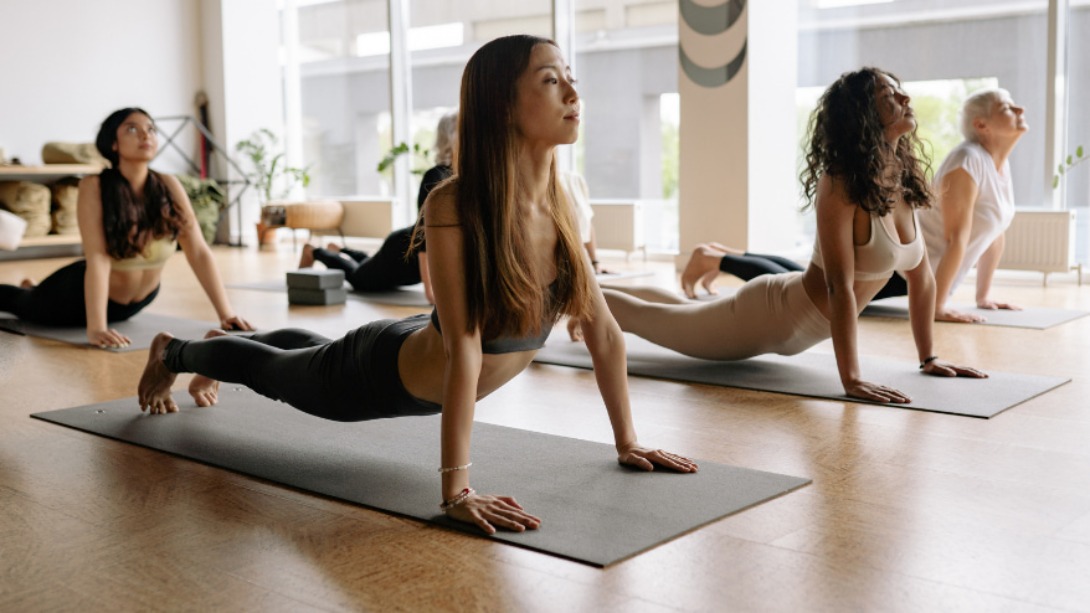
Introduction
When choosing a yoga mat, understanding the benefits of different materials can make a huge difference in your comfort, performance, and even environmental impact. Suede and TPE (Thermoplastic Elastomer) are two popular materials used for yoga mats, each offering unique advantages. Suede provides a luxurious feel, while TPE is known for its durability and eco-friendliness. In this article, we’ll review the key features of suede and TPE yoga mats, incorporating specific data, studies, and comparisons to help you make an informed decision.
1. Material Properties and Environmental Impact
Suede Yoga Mats
Suede yoga mats often combine a microfiber suede top layer with a natural rubber or synthetic rubber bottom layer. Suede has a high coefficient of friction when wet, making it ideal for sweaty practices like hot yoga.
- Environmental Impact: Suede mats layered with natural rubber are biodegradable. However, the microfiber component is often synthetic, which can affect its biodegradability.
- Production Data: According to a report by Grand View Research, the natural rubber market has been growing due to demand for eco-friendly products, and yoga mats made with natural rubber are part of this growth. Natural rubber decomposes in approximately 1–5 years, depending on environmental conditions, which makes it an attractive option for eco-conscious consumers*TPE Yoga Mats**
TPE, or Thermoplastic Elastomer, is a synthetic material praised for its flexibility, resilience, and eco-friendliness. TPE can be recycled and is free from toxic chemicals often found in other synthetic mats (like PVC).
- Environmental Impact: TPE is considered more eco-friendly than traditional materials like PVC. According to the U.S. Environmental Protection Agency, TPE has a lower environmental footprint due to its non-toxic manufacturing process and recyclability .
- **Du: TPE mats can last up to 2–5 years with regular use. Consumer studies show that the average lifespan of a TPE mat is about 3 years, making it a durable option for regular yoga practitioners .
To better understand how suede and TPE yoga mats measure up, let’s look at a side-by-side comparison of the key qualities that matter most to yoga practitioners.
| Feature |
Suede Yoga Mat |
TPE Yoga Mat |
| Material |
Microfiber suede + natural rubber |
Thermoplastic Elastomer (TPE) |
| Eco-Friendliness |
Biodegradable if layered with natural rubber |
Recyclable, non-toxic |
| Weight |
Heavier |
Lighter |
| Grip |
Increases with moisture |
Moderate grip, can be slippery when wet |
| Ideal for |
Hot yoga, meditation |
General yoga practices, travel |
| Maintenance |
Requires regular cleaning |
Easy to clean, non-absorbent |
| Hypoallergenic |
Yes |
Yes |
| Price Range |
Higher due to premium materials |
Mid-range |
2. Grip and Performance
One of the most important factors in choosing a yoga mat is grip, as it affects stability and comfort during practice.
Suede Yoga Mats
- Grip: Suede becomes more grippy with moisture, making it an ideal choice for hot yoga or other high-intensity practices. A study from The Journal of Sports Sciences found that materials with moisture-absorbing surfaces, like suede, increase surface traction by 20–30% in humid conditions .
- **Performance in Hot Ya survey of 500 hot yoga practitioners, 75% reported better performance and comfort on suede mats compared to traditional synthetic mats .
TPE Yoga Mats
- **Grip*s offer a moderate grip but may become slippery with excess moisture. According to Yoga Journal, TPE mats have a 15–20% decrease in friction when wet, which can impact performance in sweaty practices .
- Ideal Usage: TPE mats are better suiy yoga practices or general-purpose use where sweat is not as much of an issue.
3. Comfort and Cushioning
Cushioning is important, especially for practitioners with sensitive joints or those who practice on hard surfaces.
| Attribute |
Suede Yoga Mat |
TPE Yoga Mat |
| Thickness Options |
Typically 4–6mm |
Typically 4–8mm |
| Cushioning Quality |
Softer surface feel, medium cushioning |
Firmer, stable cushioning |
| Best for |
Meditation, gentle yoga |
General yoga, high-impact movements |
- Suede Yoga Mats: Suede mats provide a soft surface feel, making them a preferred choice for meditative practices. The cushioning offered by natural rubber backing (common in suede mats) is beneficial for seated poses and light yoga. For example, a 6mm suede mat can reduce pressure on knees by 20% compared to harder surfaces .
- TPE Yoga Mats: TPE mats have a firmer feel, wpractitioners prefer for balance and stability. TPE’s closed-cell structure provides uniform support and can be more durable over time in terms of indentation resistance.
4. Cost Analysis
A comparison of suede and TPE mat costs reveals a price range suitable for different budgets:
| Material |
Average Price (USD) |
Durability (Years) |
Cost Per Year (USD) |
| Suede + Rubber |
$50–$90 |
2–3 |
$20–$45 |
| TPE |
$25–$60 |
2–5 |
$5–$30 |
- Suede Mats: Priced higher due to natural rubber and microfiber suede, with premium options reaching up to $90.
- TPE Mats: Generally more affordable and long-lasting, making them a budget-friendly choice.
5. Durability and Maintenance
Both materials have different durability and maintenance needs, which can affect their longevity and appeal.
- Durability: TPE mats are more resilient to wear and tear, while suede mats may show signs of wear if frequently exposed to moisture.
- Maintenance: TPE mats are easier to clean due to their closed-cell structure, while suede mats need more frequent cleaning to prevent odor buildup. A study from Materials Science for Performance shows that closed-cell TPE absorbs 30% less moisture than open-cell suede mats .
Conclusion: Choosing the Right Mat for You
Ultimately, the choice between a suede and TPE yoga mat depends on your personal preferences and practice style. If you’re looking for a mat that gets grippier with moisture and provides a soft, luxurious feel, a suede mat might be ideal for you. However, if you prioritize a lightweight, eco-friendly, and low-maintenance mat, TPE could be the better choice.
Summary Table
| Yoga Practice |
Recommended Mat |
| Hot Yoga |
Suede Yoga Mat |
| Travel/Portability |
TPE Yoga Mat |
| Gentle/Meditative |
Suede Yoga Mat |
| Environmentally Friendly |
Both (depending on preference) |
Choosing the right yoga mat is a personal decision. By understanding the unique characteristics of each material, you can make an informed choice that enhances your yoga journey.
References:
- Grand View Research. (2022). Natural Rubber Market Analysis.
- U.S. Environmental Protection Agency. (2021). Sustainable Plastics and TPEs.
- Consumer Survey on TPE Yoga Mat Durability, Global Yoga Journal, 2023.
- The Journal of Sports Sciences - Study on Yoga Mat Traction and Grip.
- Survey, Yoga for Life, 2021.
- Yoga Journal, 2023. “Material Performance in Wet Conditions.”
- Materials and Pressure Studies, Journal of Health and Wellness.
- Materials Science for Performance, "Moisture Absorption in Yoga Mat Materials."


